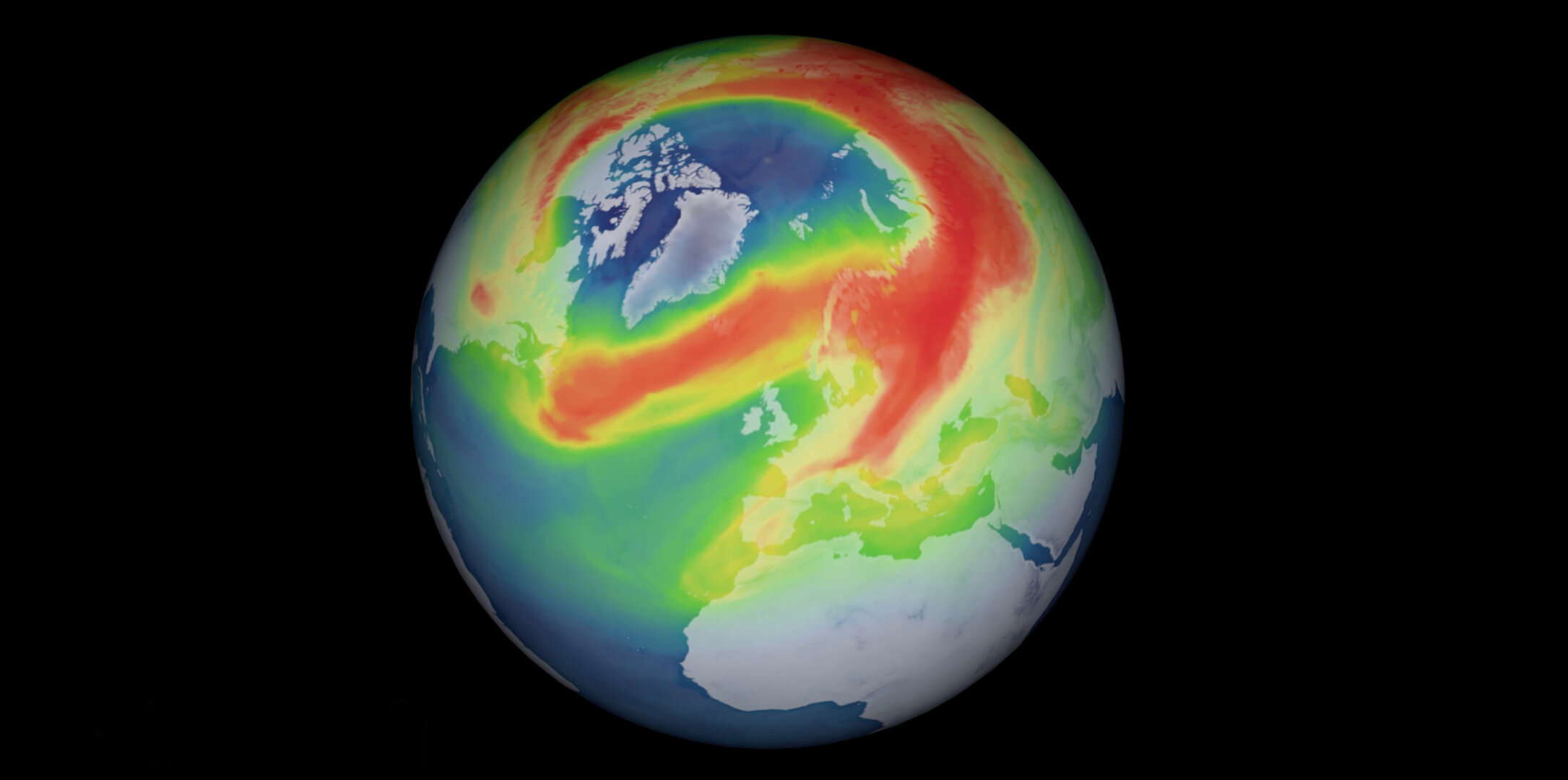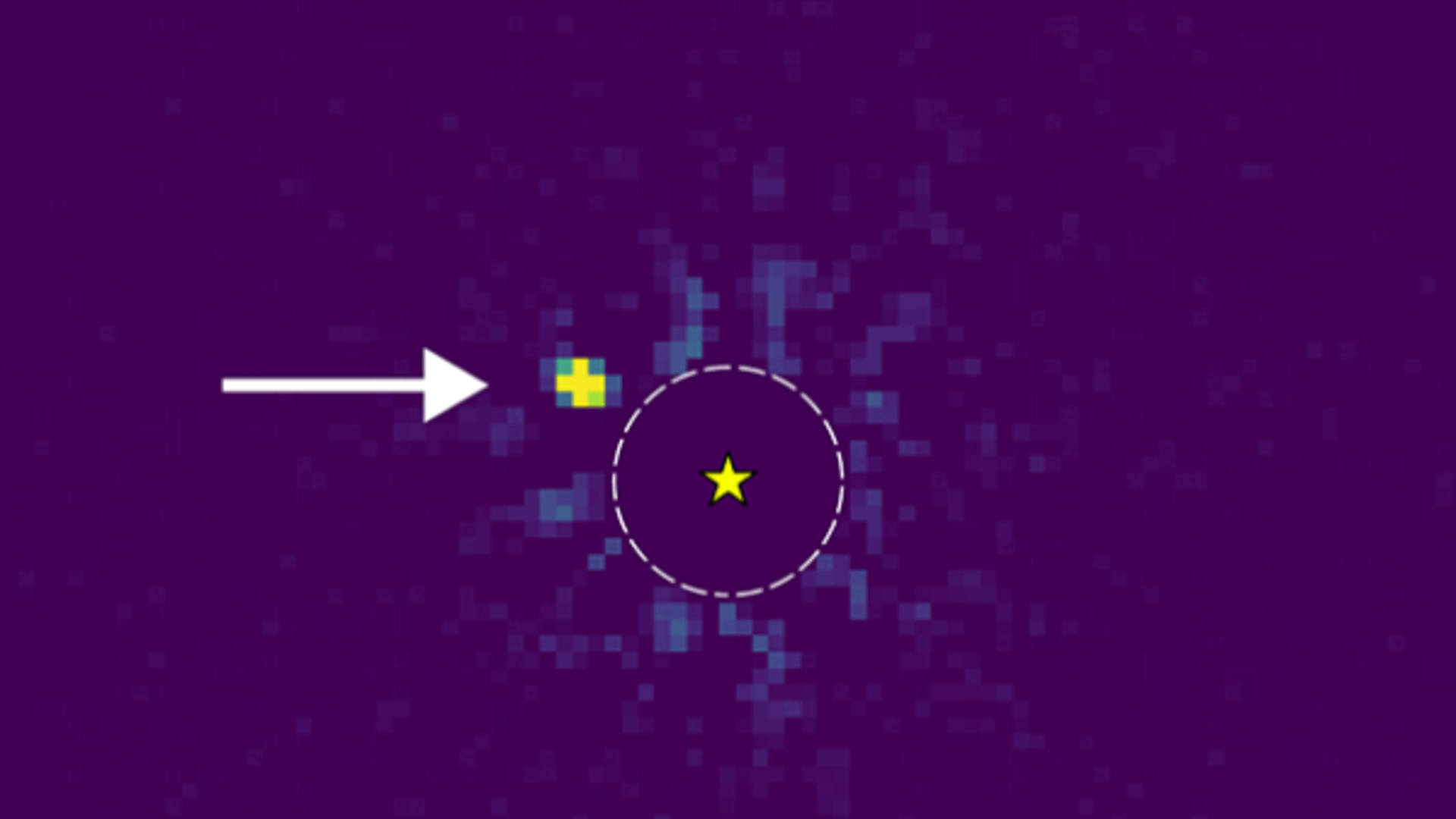Ozone hole three times the size of Greenland opens over the North Pole
Ozone holes open over the South Pole every year. Holes at the North Pole are much, much rarer.

Scientists have detected what may be the largest hole in the ozone layer ever recorded over the North Pole.
The ozone hole covers an area roughly three times the size of Greenland, scientists from the European Space Agency (ESA) said in a statement, and could expose people living at far northern latitudes to high levels of ultraviolet radiation if it grows much larger. Fortunately, the hole looks likely to close on its own in the next few weeks, the ESA researchers said.
Holes form in the ozone layer — which is a sheet of gas in Earth's atmosphere that absorbs much of the harmful ultraviolet light emitted by the sun — every year over Antarctica due to seasonal changes in cloud cover. Ozone holes over the Arctic, however, are rarer. The last time an Arctic ozone hole opened was in 2011, and it was significantly smaller than the hole seen now, the researchers said.
"From my point of view, this is the first time you can speak about a real ozone hole in the Arctic," Martin Dameris, an atmospheric scientist at the German Aerospace Center, told Nature.
Related: Banned ozone-depleting chemical was used illegally in China
The Antarctic ozone hole opens every year due to the combination of frigid temperatures and man-made pollution. When temperatures plummet at the start of Antarctica's winter, high-altitude clouds form over the South Pole. Industrial chemical pollutants, including chlorine and bromine, trigger reactions in these clouds that eat away at the surrounding ozone gas.
The Arctic, which has more variable temperatures, doesn't usually see the same ozone-depleting conditions, the researchers said. But this year, powerful winds trapped cold air in a "polar vortex" above the Arctic. That led to colder temperatures and more high-altitude clouds than normal. Hence, North Pole ozone-depletion began.
Breaking space news, the latest updates on rocket launches, skywatching events and more!
Fortunately, with the sun slowly getting higher over the Arctic, atmospheric temperatures are already beginning to increase, which means the conditions causing the ozone hole should soon change, the researchers said. However, if the hole continues to expand south, Arctic residents — like those living in southern Greenland — may need to apply sunscreen to prevent UV damage.
The much larger Antarctic ozone hole will remain a seasonal feature, as it has for roughly four decades, though that hole has begun shrinking in size. A 2018 assessment by the World Meteorological Organization found that the southern ozone hole has been shrinking by about 1% to 3% per decade since the year 2000, with the 2019 hole measuring smaller than it ever has since 1982. The shrinking of the southern ozone hole is thanks largely to a global ban on ozone-depleting chemicals initiated in 1987, though some key nations still do not appear to be participating. According to a 2018 investigation, factories in China still appeared to be pumping large quantities of ozone-depleting chemicals into the atmosphere.
- Images of melt: Earth's vanishing ice
- The reality of climate change: 10 myths busted
- Top 10 ways to destroy Earth
Originally published on Live Science.
OFFER: Save 45% on 'How It Works' 'All About Space' and 'All About History'!
For a limited time, you can take out a digital subscription to any of our best-selling science magazines for just $2.38 per month, or 45% off the standard price for the first three months.

Brandon has been a senior writer at Live Science since 2017, and was formerly a staff writer and editor at Reader's Digest magazine. His writing has appeared in The Washington Post, CBS.com, the Richard Dawkins Foundation website and other outlets. He holds a bachelor's degree in creative writing from the University of Arizona, with minors in journalism and media arts. He enjoys writing most about space, geoscience and the mysteries of the universe.



